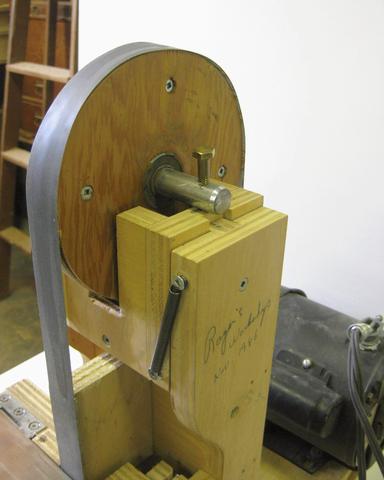
Roger Gallant sent me some pictures of some of his homemade belt sanders.
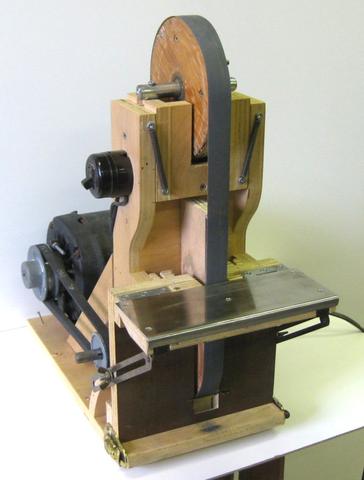
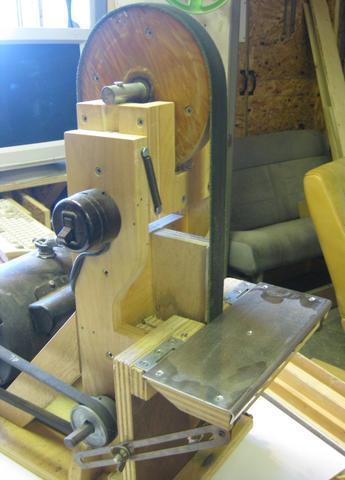
"In the above right photo, you can see a leather belt installed (charged with "green rouge") from Lee Valley, I use this to polish chisels etc after the finest belt.
At left, notice the brass bolt which is used for belt tracking.
The bottom shaft is from a scrapped electric motor, perfect for this job because it has machined fits for two standard bearings, a spline in the center to press into the plywood wheel and a machined end to receive the drive pulley. The springs you see used to be elastic bands hooked over dowels glued in where the screws now are.
From the above pictures, I wasn't sure how a belt change would be accomplished, so I asked. Roger replied, with more pictures - see below:
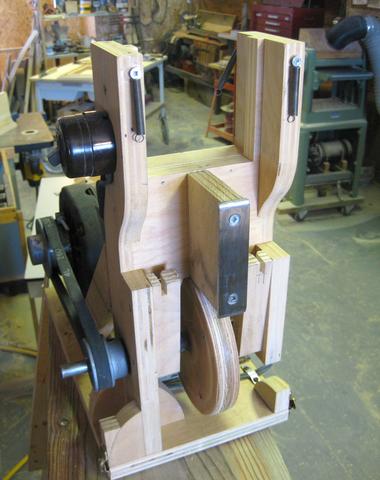
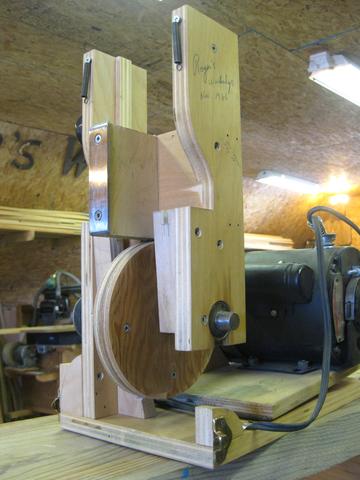
For the sander/sharpener belt change - notice the snaps at the very bottom front, they allow the whole front section to come off then push down on top to remove tension, and the belt slides off wheels to the right.
The screws protruding out of the back of the adjustable table slide down into the slots you see just above and to either side of the bottom wheel (see left photo above).
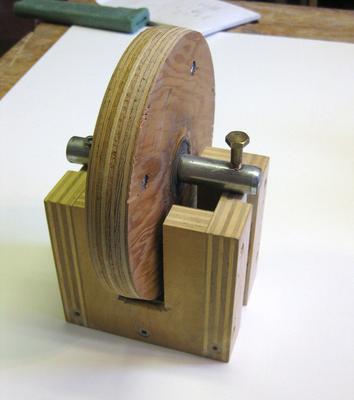
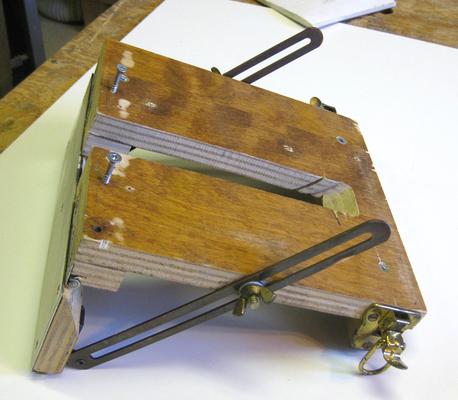
I had been toying with the idea of building a strip sander myself too. But then Canadian Tire had theirs on sale for $47. It has a 1/3 HP induction motor. A 1/3 HP utility motor from Canadian Tire costs about $100 if purchased separately!
Roger's response:
"I guess the price of motors makes many of these projects too expensive, but I don't remember ever buying one at full price. I think the motor on the small sander was scrounged from an old furnace blower or an old washing machine, the edge belt sander is using a 1 hp motor from a deep well pump (the long shaft on these pump motors worked out great). I used to attend many flea markets looking for what many people consider junk.
Notice that I used 3 types of leftover laminate flooring on the bandsaw project. I also make most of my sanding belts, and reuse wood from many places (construction lumber, grocery store fruit crates - laminated into plywood for the combo lock, etc etc).
Update 2015: Despite having bought a strip sander a few years ago, I
I built my own version
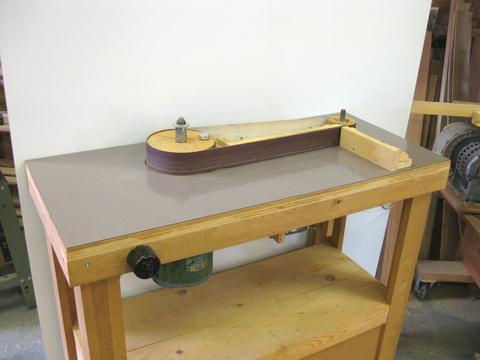
Roger also sent me some photos of his homemade edge sander. I noticed the bolt sticking
out of the left wheel and wondered whether that would lead to vibration.
Roger replies:
The edge sander has no noticeable vibration - I used aluminum bolts (light) and notice in the photo that I used the leftover bolt piece on the opposite side to help balance.
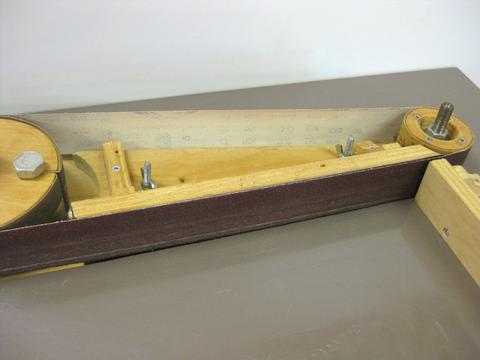 With the belt removed this was my inside drum sander. The belt backer and
90-deg stop also come off for other operations.
With the belt removed this was my inside drum sander. The belt backer and
90-deg stop also come off for other operations.
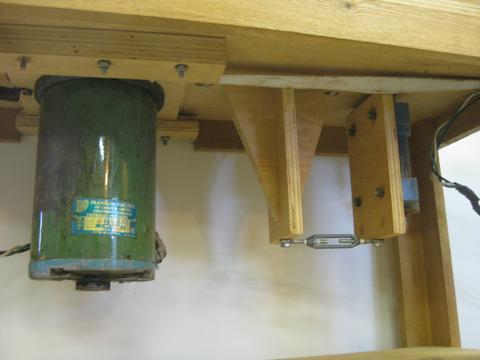 The motor is on a spring loaded
slide for belt tension (notice the white strap off to the right
for relieving tension when changing belts)
The motor is on a spring loaded
slide for belt tension (notice the white strap off to the right
for relieving tension when changing belts)
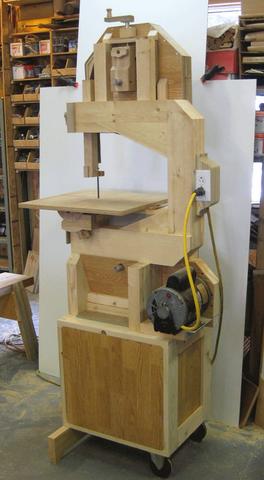
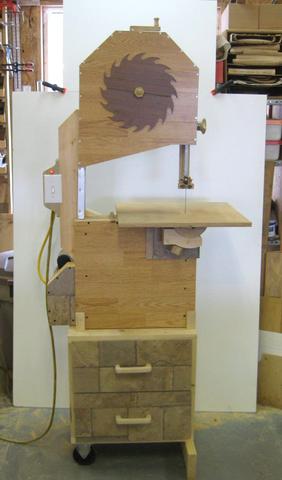
By the way I don't think that I mentioned how well the bandsaw is working. This is the first one I've owned that is very good at resawing (blade 1/2" 3tpi, 1hp motor) I think I will leave the large blade on and use my old 12" beaver for smaller work. I am very pleased at how effective the drawer is at collecting the sawdust. I think I was able to put this saw together for just a little more than the price of one of those 1/3hp motors you mentioned (with a re-purposed motor of course).
Back to my Woodworking website